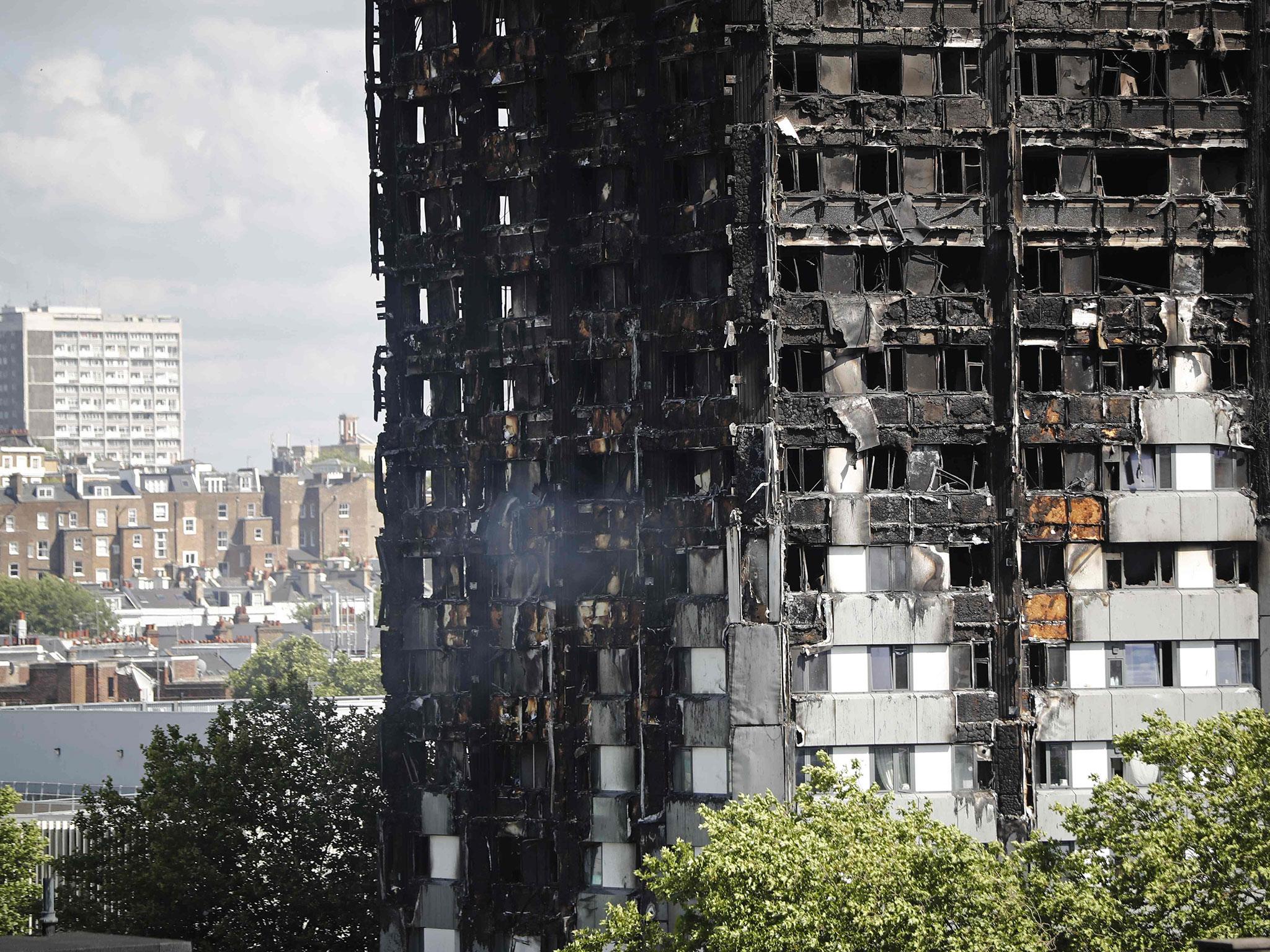After more shocking admissions about Grenfell Tower and similar blocks, it's time for urgent action
Nicholas Holgate quit following harsh criticism of Kensington council’s inadequate response, although he claimed he had been asked to stand down by the Local Government Secretary Sajid Javid. Javid’s office denied the contention. Is anyone prepared to take responsibility for anything?

Your support helps us to tell the story
From reproductive rights to climate change to Big Tech, The Independent is on the ground when the story is developing. Whether it's investigating the financials of Elon Musk's pro-Trump PAC or producing our latest documentary, 'The A Word', which shines a light on the American women fighting for reproductive rights, we know how important it is to parse out the facts from the messaging.
At such a critical moment in US history, we need reporters on the ground. Your donation allows us to keep sending journalists to speak to both sides of the story.
The Independent is trusted by Americans across the entire political spectrum. And unlike many other quality news outlets, we choose not to lock Americans out of our reporting and analysis with paywalls. We believe quality journalism should be available to everyone, paid for by those who can afford it.
Your support makes all the difference.Little more than a week on from the devastating fire at Grenfell Tower, the Prime Minister has confirmed what many feared – there are other high-rise blocks in the UK, perhaps as many as 600, which are clad in similar materials to those that went up in deadly flames in west London. At its worst, this means there are thousands of people living in buildings that are simply not safe. Until matters are rectified, they will not sleep soundly in their beds – who would?
Plainly this is a stark admission by the Government, which raises as many questions as it answers. Most crucially, we must be told how on earth flammable cladding could come to be in use on residential buildings and be permitted under modern building regulations. Were the combustible qualities of the material found at Grenfell Tower truly understood? If they were, then its usage is utterly inexplicable; if not, why not? As has been clear since last Wednesday, a wide range of corporate bodies and government departments (local and central) need urgently to be the subject of proper scrutiny. The Government’s promised judge-led inquiry cannot begin too soon.
Alongside the investigations into the fire itself – the death toll from which currently stands at 79, with further rises likely – local authorities and private developers must immediately review current construction practices. In addition, those high-rises which have been identified as being hazardously clad will require speedy renovation; residents may have to be rehoused in the interim. It would be wholly unreasonable to expect frightened people to stay in homes they have been told could be a fire risk. The Government has set out good intentions in this regard; it must now follow them through.
In her statement to the Commons, Theresa May acknowledged that Kensington and Chelsea Council has been found wanting in the aftermath of the disaster – “unable to cope”, in the Prime Minister’s understated words. Its chief executive Nicholas Holgate had already quit following harsh criticism of the council’s inadequate response, although he claimed he had been asked to stand down by the Local Government Secretary Sajid Javid. Javid’s office denied the contention. Is anyone prepared to take responsibility for anything?
One positive development has been the decision to use 68 social homes in a newly built block in Kensington to rehouse survivors. Assurances have been given that all those left homeless by the disaster will be found new places to live in the locality. Given that psychological damage is known to be a frequent result of forcing people to move long distances in the aftermath of serious trauma, this is an absolute must.
As the days have passed since the catastrophic blaze, the notion has only grown that the burned-out husk of Grenfell Tower stands as an emblem of the social and economic inequality that is dividing the United Kingdom. The failures which led to the disaster, and the ineptitude of some in officialdom in its aftermath, have shown up the stark differences between the haves and have-nots in this country – and between the ways those two groups are treated by people in authority. Unhappy truths are being exposed.
In a notable coincidence a judge today ruled that the Government’s benefit cap is unlawful in discriminating against single parents with young children. It is a wholly unconnected issue to the disaster in Kensington, but it adds yet further weight to the feeling that vulnerable people are being not only worn down by the policies of the state, but that they are bearing the brunt of actions from which the law should protect them.
Join our commenting forum
Join thought-provoking conversations, follow other Independent readers and see their replies
Comments